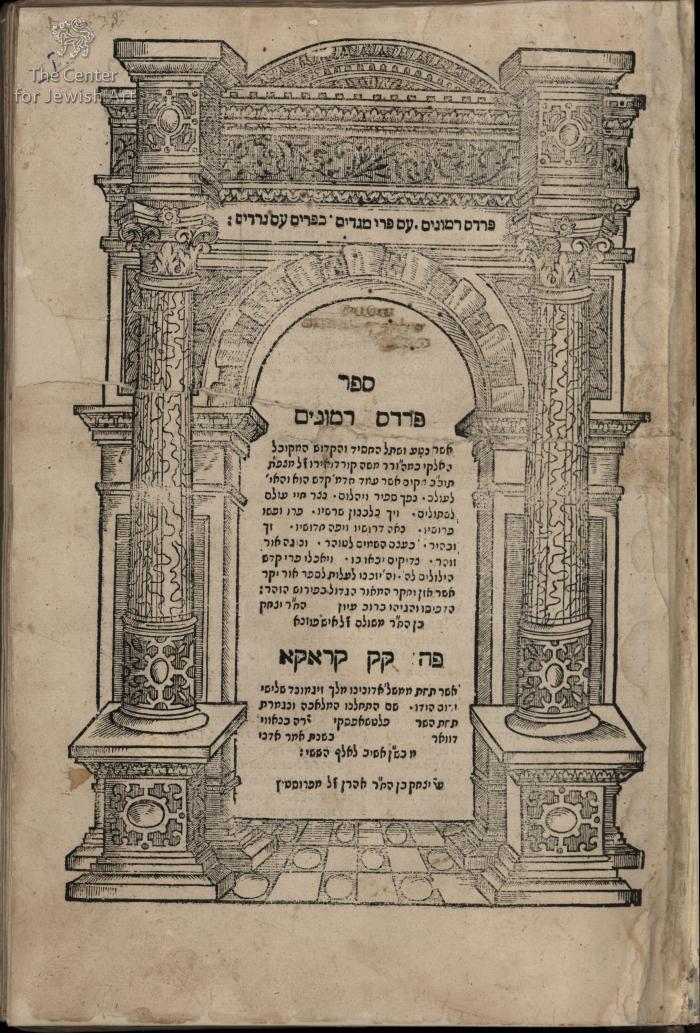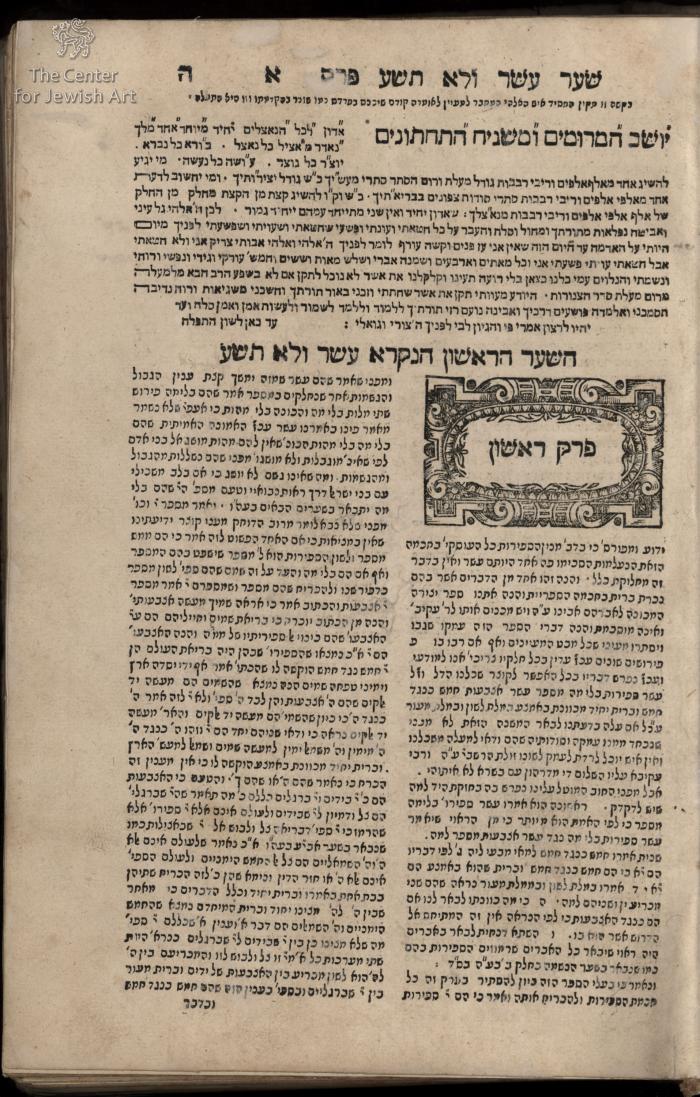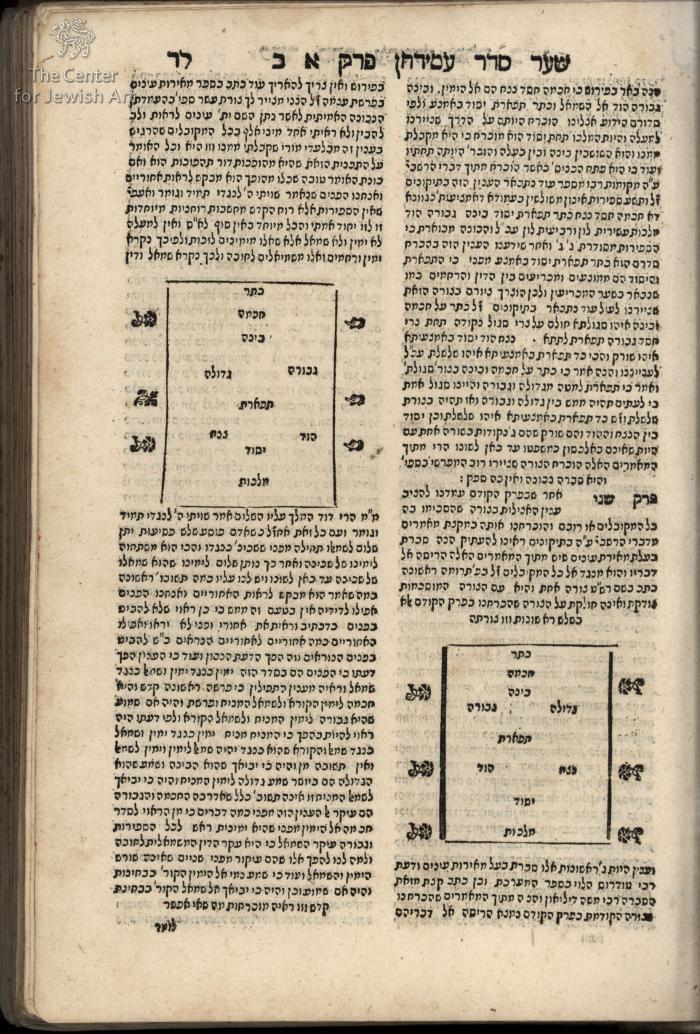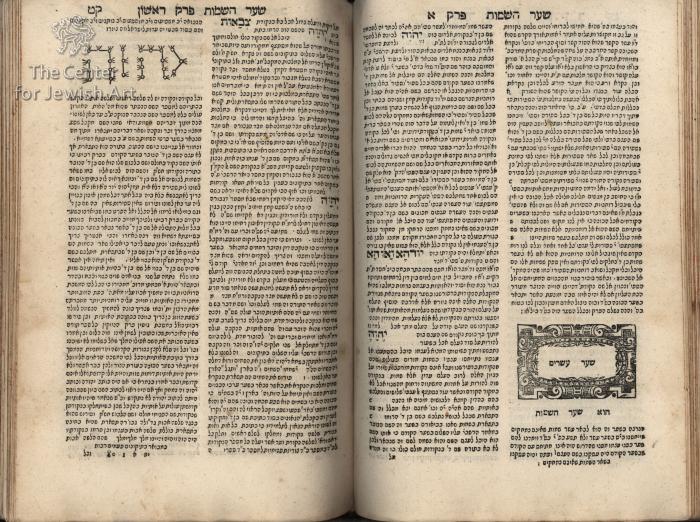Obj. ID: 36115 Pardes Rimmonim by Moshe ben Ya'akov Cordavero, Cracow (Kraków), 1591

sub-set tree:
This text was prepared by William Gross:
A comprehensive and systematic exposition of kabbalistic principles by R. Moses b. Jacob Cordovero, considered the greatest theoritician of Jewish mysticism. R. Cordovero completed this work when he was only 27 years old.
Architectural title page.
R. Cordevero (1522-1570), known also as Ramak, was a disciple of Yosef Caro, and the outstanding kabbalist of Safed in the generation before the greatest of the sixteen-century kabbalists, Yitzhak Luria, who was his pupil. His birthplace is unknown, but the name Cordovero indicates that his family originated in Córdoba, Spain and perhaps fled from there during the expulsion of 1492 during the Spanish Inquisition. His Hebrew signature, however, [Cordoeiro] strongly suggests a long-lasting residence in Portugal.
Ramak was either born in, or moved to Safed in the Land of Israel, the city that was soon to become famed as a center of Kabbalah and mystical creativity. Albeit not involved in mystical studies until his twentieth year, RaMaK soon after gained a reputation of an extraordinary genius and a prolific writer. Besides his knowledge in Kabbalah, he was a Talmudic scholar and a man of commanding mastery in Jewish philosophical thought who was respected in these fields. Contrary to popular belief, however, he was not one of the rabbis who received the special semicha ("ordination") from Rabbi Jacob Berab in 1538, alongside Rabbi Yosef Karo (Cordovero's teacher in Halakha), Rabbi Moshe of Trani, Rabbi Yosef Sagis, and Rabbi Moshe Alshich. As a whole, Ramak's contributions to posterity were in speculative and performative Kabballah, but during his lifetime he was the renowned head of the Yeshiva for Portuguese immigrants in Safed.
The advent of printing brought the publication of the kabbalistic texts as well in the 16th century, some with illustrations which demonstrated kabbalistic theories and ideas. This is the third edition of Cordevero's work and but the first Hebrew book to present the diagram of the ten Sephirot [spheres], a visual presentation of a very basic idea of the Kabbalah.
The printer Isaac Prostitz, born in Prossnitz, Moravia, was sent at an early age to Italy by his father to learn the printing trade, accomplished at the Cavalli and Gryphios presses. When the latter press closed in 1568, Prostitz acquired their typographical equipment, including the letters, ornaments, and frames, and brought them to Cracow, where he was joined by the famous proofreader R. Samuel Boehm. Prostitz petitioned King Sigismund II Augustus on 15 October 1567 for the privilege of establishing a Hebrew press, which was granted to him and "his seed after him" to print the Talmud and other Hebrew books for a period of fifty years. Prostitz would, until his death in 1611, print more than 200 titles. The press was continued by his sons, Aaron and Issachar, after his death, and their sons after them.
As recorded on the title page, Prostitz began the printing of this edition in Cracow and completed it in Nowy Dwor, near Warsaw. The change in location was due to a serious outbreak of plague in Cracow, forcing the printer and his family to flee to Nowy Dwor with the press' typographical equipment. Pardes Rimmonim is the only Hebrew book printed in Nowy Dwor. After several months, when the plague had subsided, Prostitz returned to Cracow.
426 pp.





















